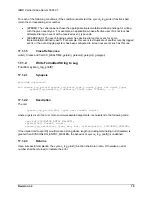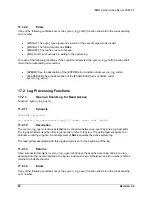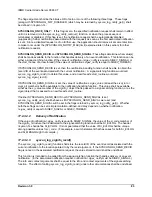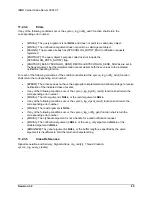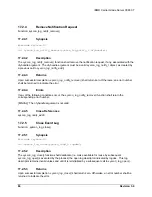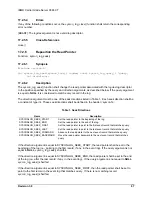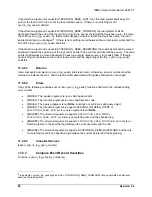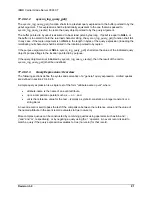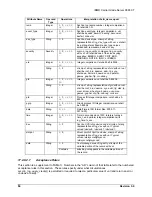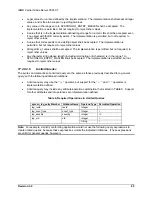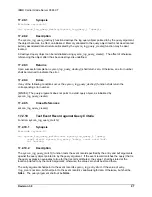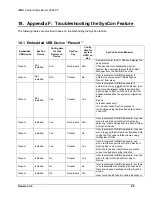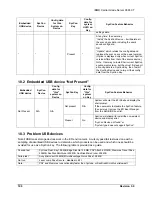
IBM® Carrier Grade Server X3650 T
Revision 3.0
93
operators result in string comparisons unless otherwise specified. For example, if x and y are character-
string values,
"x != y"
evaluates to 1 if
strcmp
(x,y) would return a non-zero value, or to zero otherwise.
(Note that sometimes a string comparison is not performed even when the right operand is a string; see
Table 3 for examples.)
The
"="
operator is a synonym for the
"=="
operator.
The
"&"
operator is defined only for integer operands, and has the meaning specified for that token in the
C language (bitwise OR).
As in the C language, the expression
"! x"
evaluates to 1 if x is zero, or to zero otherwise.
For purposes of evaluating expressions, operator precedence shall be as defined for the corresponding
operators in the C language.
An
identifier
token, which conforms to the rules of a C-language identifier, can be the name of an attribute
(e.g., severity) or of a symbolic constant (e.g., EMERG). An attribute name stands for the value of the
indicated attribute in the event record being examined.
A
string-literal
token is a character sequence, beginning and ending with double-quote characters, that
conforms to the rules for a C-language character string literal. Support for wide string literals (in which
the first double-quote is immediately preceded by the letter 'L') is not required. Support for automatic
concatenation of adjacent string literals into a single string literal is not required.
An
integer-constant
token is a sequence of digits and letters than conforms to the rules for a C-language
integer constant (decimal, hexadecimal, or octal), except than unsigned and long suffixes (upper or
lowercase 'U', upper or lowercase 'L') are not permitted.
The expression
"
x
contains
y
"
is valid only for character-string operands. It evaluates to zero if
strstr(x,y)
would return
NULL
, or to 1 otherwise.
A
test
expression that consists only of an attribute name evaluates to 1 for a record that contains a value
for that attribute, or to zero for other records. In particular, the test
"data"
shall fail if the record contains
no variable portion.3
A test of the form "
attribute-name
op
val
" shall fail for any event record that does not contain a value for
the named attribute.
17.2.8.2.6
Required Comparison Operations for General Queries
Table 3 lists the required members of struct
syscon_log_entry
and the required comparison operations
for each member. The “string representation” of a record’s attribute is the character string returned by the
syscon_log_memtostr
() function for that member of that record.4
Table 3. Required Operations on Standard Attributes
3
In strictly conforming applications, this paragraph and the next apply only to the “data” pseudo-attribute, which refers
to the variable portion of an event record. They could also apply to implementation- and/or application-defined
attributes in implementations that support such attributes.
4
The implementation is permitted to convert a string-literal operand to an equivalent value (e.g., uid=“root” to uid=0)
to obtain an equivalent (presumably more efficient) test.
Summary of Contents for Carrier Grade X3650 T
Page 8: ...IBM Carrier Grade Server X3650 T Revision 3 0 viii This page intentionally left blank...
Page 12: ...IBM Carrier Grade Server X3650 T Revision 3 0 4...
Page 15: ...IBM Carrier Grade Server X3650 T Revision 3 0 7...
Page 17: ...IBM Carrier Grade Server X3650 T Revision 3 0 9...
Page 25: ...IBM Carrier Grade Server X3650 T Revision 3 0 17...
Page 43: ...IBM Carrier Grade Server X3650 T Revision 3 0 35...

